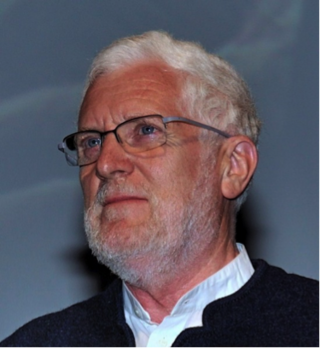A centenarian is a person who has reached the age of 100 years. Because life expectancies worldwide are below 100, the term is invariably associated with longevity. The United Nations in 2012 estimated that there were 316,600 living centenarians worldwide.

Longevity may refer to especially long-lived members of a population, whereas life expectancy is defined statistically as the average number of years remaining at a given age. For example, a population's life expectancy at birth is the same as the average age at death for all people born in the same year.

A supercentenarian, sometimes hyphenated as super-centenarian, is a person who is 110 years or older. This age is achieved by about one in 1,000 centenarians. Supercentenarians typically live a life free of significant age-related diseases until shortly before the maximum human lifespan is reached.

The Okinawa diet describes the traditional dietary practices of indigenous people of the Ryukyu Islands, which were claimed to have contributed to their relative longevity over a period of study in the 20th century.

Nicoya is a district and head city of the Nicoya canton, in the Guanacaste province of Costa Rica, located on the Nicoya Peninsula. It is one of the country's most important tourist zones; it serves as a transport hub to Guanacaste's beaches and national parks.

Vilcabamba is a village in the southern region of Ecuador, in Loja Province, about 45 km (28 mi) from the city of Loja. The etymology of the name “Vilcabamba” apparently derives from the Quichua “huilco pamba.” Huilco denotes the sacred trees, Anadenanthera colubrina, that inhabit the region; pamba is a word meaning “a plain”. The area has been referred to as the "Playground of the Inca" which refers to its historic use as a retreat for Incan royalty. The valley is overlooked by a mountain called Mandango, the Sleeping Inca, whose presence is said to protect the area from earthquakes and other natural disasters.
The Okinawa Centenarian Study is a study of the elderly people of Okinawa, Japan. The study, funded by Japan's ministry of health, is the largest of its kind ever carried out. Over the years, the scientists involved have had access to more than 600 Okinawan centenarians.
This is a list of tables of the oldest people in the world in ordinal ranks. To avoid including false or unconfirmed claims of old age, names here are restricted to those people whose ages have been validated by an international body dealing in longevity research, such as the Gerontology Research Group or Guinness World Records, and others who have otherwise been reliably sourced.

Villagrande Strisaili is a comune (municipality) in the Province of Nuoro in the Italian region Sardinia, located about 150 kilometres (93 mi) northeast of Cagliari and about 18 kilometres (11 mi) northwest of Tortolì.

Dan Buettner is an American author, explorer, longevity researcher and public speaker. He co-produced the documentary TV mini series Live to 100: Secrets of the Blue Zones (2023) based on his book of the same name and holds three Guinness records for distance cycling. Buettner is the founder of Blue Zones, LLC. He is a National Geographic Fellow.

The Gerontology Research Group (GRG) based in Los Angeles, California, US, is a global non-profit scientific organization of researchers in various fields of gerontology, primarily concerned with validating the ages of, recording and researching supercentenarians.
The New England Centenarian Study is a study of persons aged 100 and over (centenarians) in the Boston area.
Jean-Marie Robine is a French social scientist, who works in the field of demography and gerontology, and is an author and journalist, who is best known as being the co-validator of the longevity of Jeanne Calment, the oldest verified supercentenarian of all time, with whom he collaborated.
Adventist Health Studies (AHS) is a series of long-term medical research projects of Loma Linda University with the intent to measure the link between lifestyle, diet, disease and mortality of Seventh-day Adventists.
A centenarian is a person who has attained the age of 100 years or more. Research on centenarians has become more common with clinical and general population studies now having been conducted in France, Hungary, Japan, Italy, Finland, Denmark, the United States, and China. Centenarians are the second fastest-growing demographic in much of the developed world. By 2030, it is expected that there will be around a million centenarians worldwide. In the United States, a 2010 Census Bureau report found that more than 80 percent of centenarians are women.
The concept of Hara hachi bun me (腹八分目) or hara hachi bu is the practise of eating until one is about 80% full, a traditional Japanese philosophy to achieve good health and longevity. The elders of Okinawa, are world renowned for their longevity are also featured in a series of books referencing their traditional
Nir Barzilai is an Israeli geneticist and longevity researcher.
Moais are social support groups that form in order to provide varying support from social, financial, health, or spiritual interests. Moai means "meeting for a common purpose" in Japanese and originated from the social support groups in Okinawa, Japan. The concept of Moais have gained contemporary attention due to the Blue Zone research popularized by Dan Buettner. According to research, Moais are considered one of the leading factors of the longevity of lifespan of the Okinawan people, making the region among the highest concentration of centenarians in the world.

Michel Poulain was originally trained in astrophysics at University of Liège (ULiège). He received a PhD in demography at University of Louvain (UCLouvain). As a demographer, he has specialized in international Migration Statistics and Longevity studies. Currently emeritus professor at UCLouvain, he is also senior researcher at the Estonian Institute for Population Studies at Tallinn University (Estonia). He has been President of the Société Belge de Démographie (1984-1990) and later of the Association Internationale des Démographes de Langue Française (AIDELF), (1988-2000).
Timeblock is a research project that was developed in Switzerland to discover blue zones and aging-process solutions.










